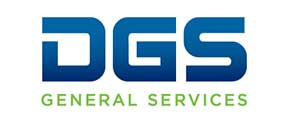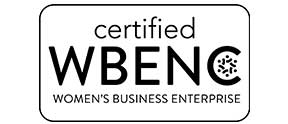BLOG CATEGORIES
SUBSCRIBE
FOR LATEST UPDATES
Sign up for our monthly newsletter with our latest offers,hot blogs and much more !


JOIN US
FOR CALL
Lets chat via skype to discuss your questions concerns, and project needs
TRENDING NOW
ESG Audit Preparation: Tips and Tools

By and large, investors, customers, and employees expect more transparency and accountability on ESG issues from the companies they are involved with. In addition, governments around the world are developing or already enacting new ESG regulations. Brands that are not prepared for the growing scrutiny of their ESG practices could face serious consequences, including reputational damage, lost market share, and regulatory fines. In today’s article, we will provide some guidance on ESG audit preparation and share the expertise we gained over a 15+ year track record.
Assessing Current ESG Compliance
The first step in preparing for an ESG audit is to assess your current ESG performance. This can be done through a variety of methods such as self-assessment which involves reviewing your company’s policies, procedures, and performance data to identify areas where you are strong and areas where you need to improve. In addition, third-party assessments can also be used. This involves hiring a qualified consultant to conduct an independent assessment of your ESG performance.
Once you have a good understanding of your real-time data you can benchmark your company’s performance against industry standards. This will help you to identify areas where you can make the most significant improvements.
Here are a few tools and resources available to help you with your ESG assessment:
-
Sustainability Accounting Standards Board (SASB) Materiality Matrix: This tool helps you to identify the ESG issues that are most material to your industry.
-
Global Reporting Initiative (GRI) Standards: This framework provides guidance on how to report on a wide range of ESG issues.
-
Task Force on Climate-Related Financial Disclosures (TCFD): This framework provides guidance on how to report on climate-related risks, such as the global impact of overseas suppliers, increasing insurance due to extreme weather, or decreasing demand for goods and services.
-
BREEAM: This infrastructure is a science-based suite of validation and certification systems for a sustainably built environment, supporting ESG solutions in whole-life performance, biodiversity, reporting, and more.
-
Ecometrica: This environmental software-as-a-service company enables businesses and governments to accurately and transparently calculate their climate impact using its software platform, making it easier to comply with the latest legislation and build resilience for the future.
Developing an ESG Reporting Policy
ESG reporting policy will ensure that you are meeting all applicable regulatory requirements as well as serve to outline your company’s ESG goals and metrics and your teams’ approach to stakeholder communication.
When developing an ESG reporting policy, a number of factors will need to be considered such as audience, scope, metrics, reporting frequency, and communication methods. This policy should be reviewed and updated on a regular basis to ensure that it is aligned with the company’s ESG goals and the latest regulatory requirements.
Here are some additional tips:
-
Be transparent and honest in your reporting
-
Use clear and concise language
-
Avoid jargon and technical terms
-
Use data and visuals to support your claims
-
Be accountable for your ESG performance
Preparing for the ESG Audit
Once you have a good understanding of your current ESG performance, identify the relevant regulations, and develop a reporting policy, you can further prepare for the ESG audit.
Here are some steps to take:
-
Identify the scope of the audit: This will involve determining which ESG issues will be audited and the time period that will be covered.
-
Gather documentation and data: This will include collecting evidence to support your ESG claims.
-
Prepare your team: Make sure that all relevant employees are aware of the ESG audit and their roles and responsibilities.
It is also important to ensure internal alignment and collaboration. The ESG audit will be most effective and meaningful as a cross-functional effort, with input from all relevant departments, such as procurement, finance, HR, CSR as well as marketing and communications. For additional insight on how to properly prepare for ESG audits, contact us by email at service@artemia.com.
see more...

CSR, ESG and Sustainability...
Many companies have incorporated Corporate Social Responsibility, or CSR, and ...
LEARN MORE
ESG Reporting: What it mean...
The U.S. Securities and Exchange Commission (SEC) has proposed amendments to m...
LEARN MORE
Sustainability: Why you nee...
By leveraging strategic communications plans tailored to meet specific goals, ...
LEARN MORE








